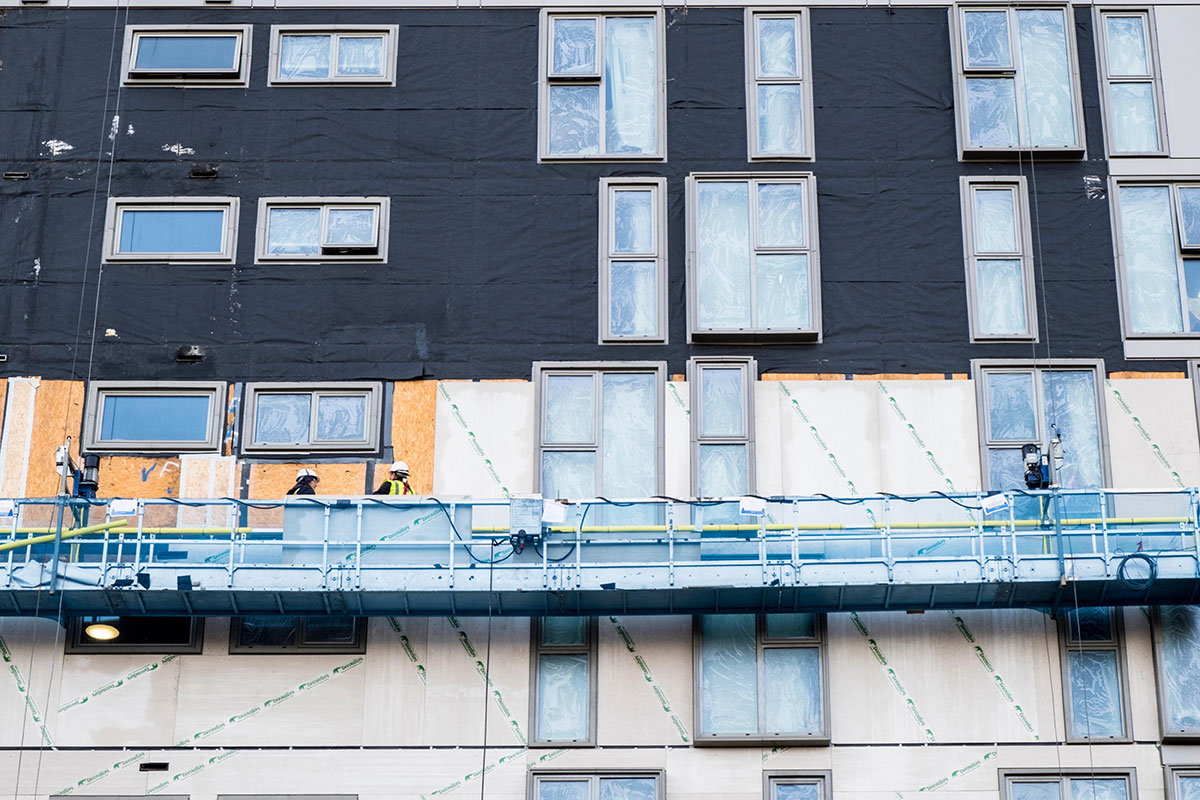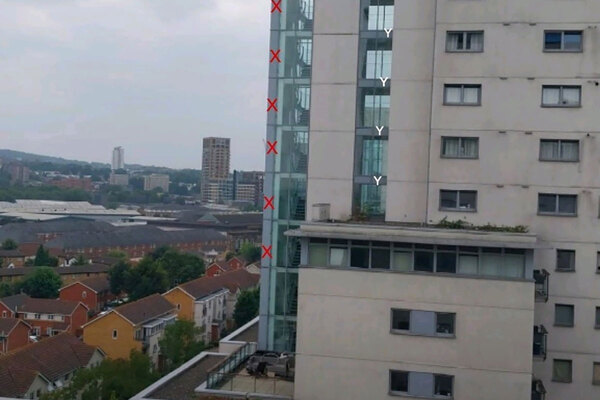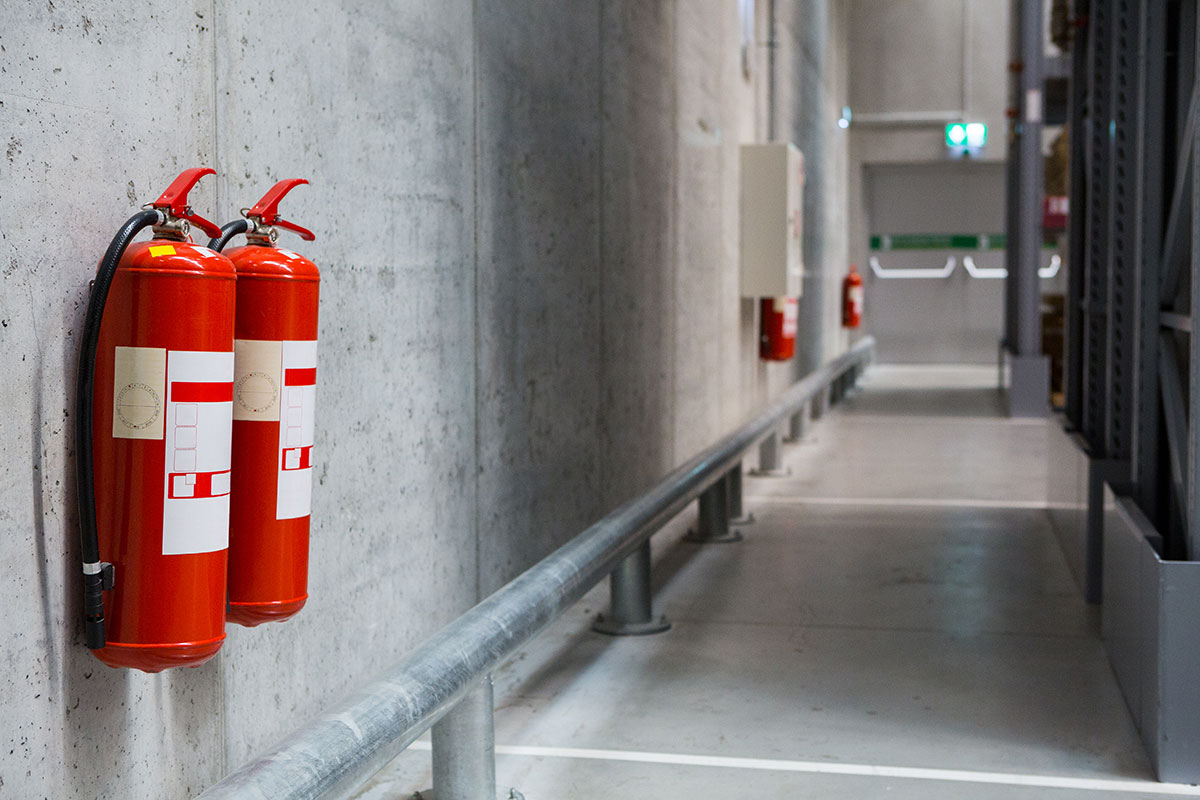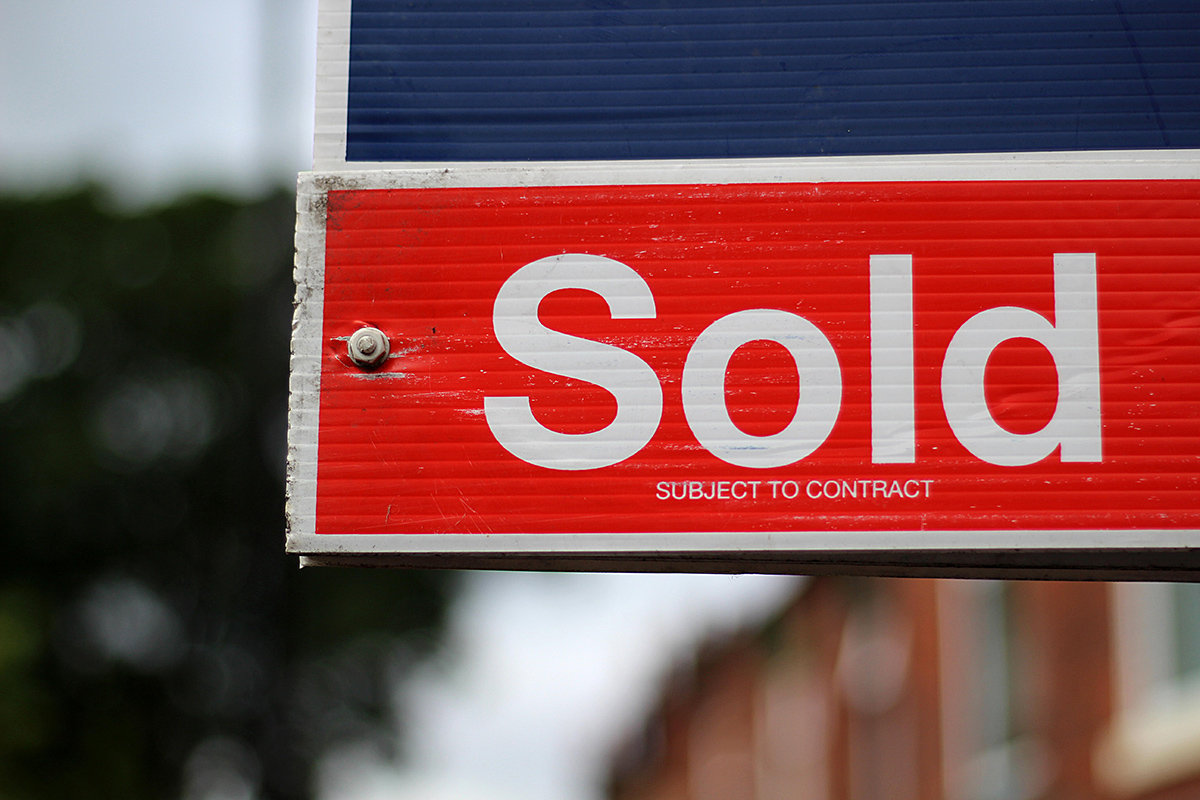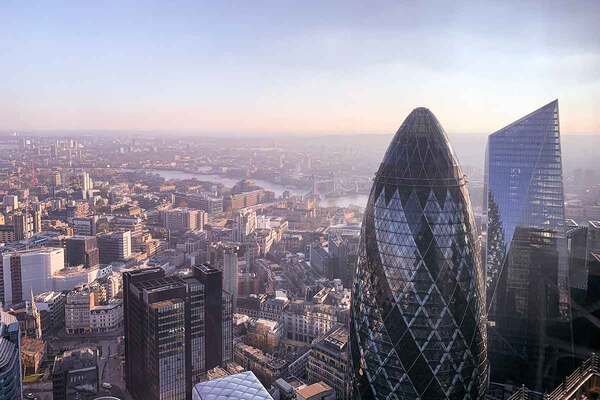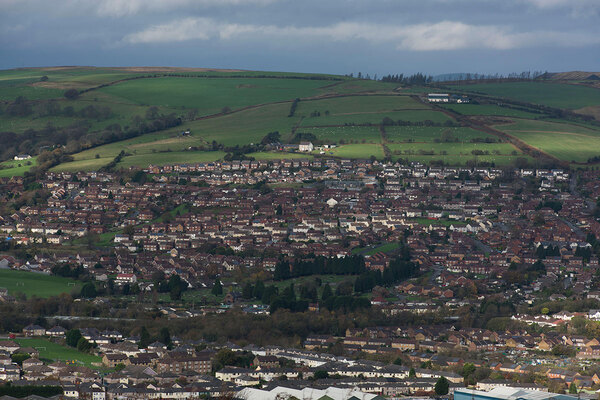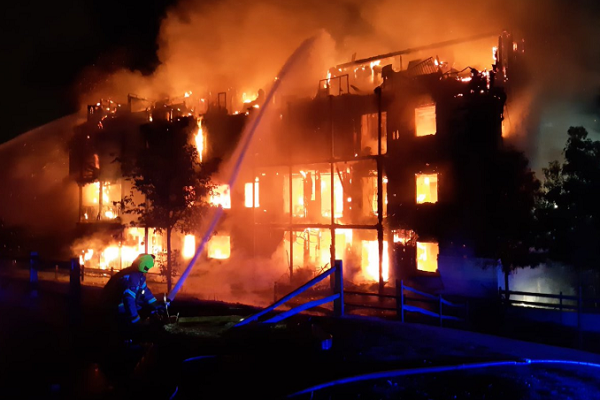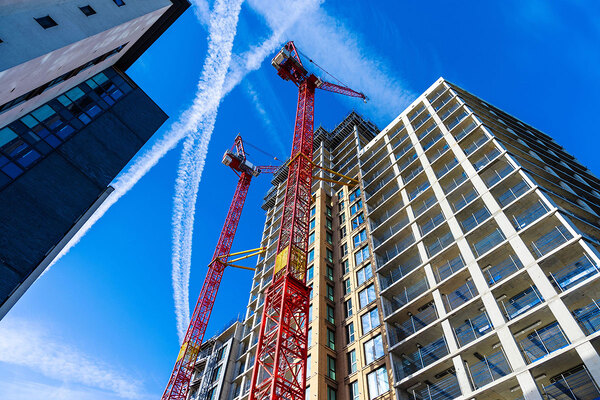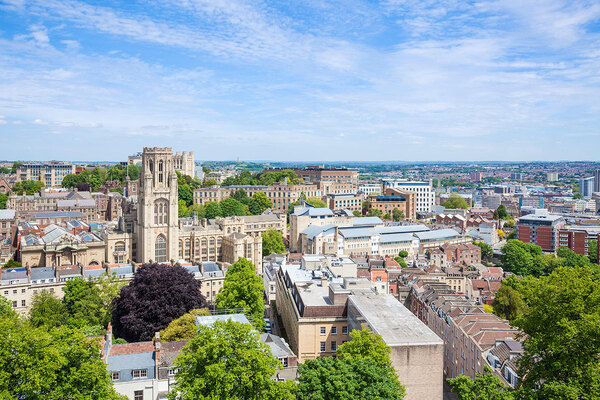You are viewing 1 of your 1 free articles
Remediation of all 11m-plus buildings will not complete until at least 2035 and will total £16.6bn, spending watchdog finds
The spending watchdog has called on the government to set milestones for cladding remediation as it revealed all works will not be complete until at least 2035 and will cost £16.6bn.
The National Audit Office (NAO) believes the milestones are needed to ensure the 2035 estimated end target can be hit and provide hundreds of thousands of residents with an indication of when their buildings will be made safe.
Another recommendation from the report is to provide greater transparency on remediation performance.
It also called for the government to evaluate its code of practice for remediation, which residents could use as a basis to query progress on their buildings and understand whether they need to take action to escalate.
The NAO report has examined how well the Ministry of Housing, Communities and Local Government (MHCLG) is maximising the identification of unsafe buildings, driving progress with remediation works and managing taxpayers’ exposure to related costs.
It follows the publication of the second and final report by the Grenfell Tower Inquiry in September, which examined the root causes of the fire in June 2017 that led to the deaths of 72 people.
The inquiry found a “poorly run”, “complacent” and “defensive” department under the previous Conservative government “failed to act on what it knew” about dangerous cladding in the years before Grenfell. The inquiry found it had an enthusiasm for deregulation that “dominated” its thinking.
The Labour government confirmed last month that fire safety will be excluded from any plan to strip back regulations.
The NAO report notes the government has changed the types of buildings within the scope of its programmes significantly, as well as its approach to remediation, as the scale and impact of the cladding problem became clearer.
It now has programmes to address dangerous cladding for all the estimated 9,000-12,000 buildings over 11 metres in height it considers need remediating.
So far, 4,771 buildings have been brought into the portfolio, but it is taking longer than expected to identify the remainder, and some may never be identified.
Of the 4,771 buildings in the government’s portfolio – the equivalent of 258,000 homes – remediation work has yet to start on more than half, is in progress for a fifth, with around one-third complete. Of all buildings potentially in scope, work is complete for only 12%-16%.
This means a majority of people still do not know when their buildings will be made safe, contributing to residents suffering significant financial and emotional distress.
Before Rushanara Ali lost the ministerial building safety brief last month, which included the government’s response to the Grenfell Tower fire, she admitted that up to 7,000 buildings that require remediation have not yet applied for the government’s cladding safety scheme.
Ms Ali was replaced by Alex Norris, after bereaved family members and survivors of the disaster complained about Ms Ali’s attendance at Franco-British Colloque. The conference was sponsored by Saint Gobain, which was the majority owner of Celotex, one of the firms heavily criticised by the inquiry for its involvement in the fire.
The spending watchdog put the figure at slightly more than Ms Ali’s estimate, with 7,200 still to be identified.
As the NAO previously reported, incomplete building records, construction materials that differ from those on plans, and problems tracing owners can make identifying affected buildings difficult.
The watchdog found that 98% of estimated high-rise buildings over 18 metres with dangerous cladding have been identified.
However, it highlighted that because there is no mandatory registration for medium-rise buildings of 11 to 18 metres, some building owners may be reluctant to engage for fear of uncovering problems out of scope for government funding, and others can lack the time and knowledge to navigate the process.
Of the £16.6bn bill to fix unsafe cladding on all buildings over 11 metres in England, MHCLG expects to provide £9.1bn, with the remainder funded by developers that have agreed to remediate buildings they developed, private owners or social housing providers.
To keep taxpayer contributions within a £5.1bn cap over the long term, MHCLG plans to recoup £700m through refunds from developers for remediation works the taxpayer has already funded, and around £3.4bn from a new Building Safety Levy.
The levy will be paid by developers on new developments, though MHCLG is yet to confirm payment mechanisms and does not expect it to be introduced until autumn 2025 at the earliest.
The government has acknowledged there may be overlaps between its remediation programmes and other government priorities, from decarbonisation to building new homes. The NAO report found MHCLG needs to do more to ensure that policies are not working at cross-purposes.
Gareth Davies, head of the NAO, said: “Seven years on from the Grenfell Tower fire, there has been progress, but considerable uncertainty remains regarding the number of buildings needing remediation, costs, timelines and recouping public spending. There is a long way to go before all affected buildings are made safe, and risks MHCLG must address if its approach is to succeed.
“Putting the onus on developers to pay and introducing a more proportionate approach to remediation should help to protect taxpayers’ money. Yet it has also created grounds for dispute, causing delays.
“To stick to its £5.1bn cap in the long run, MHCLG needs to ensure that it can recoup funds through successful implementation of the proposed Building Safety Levy.”
The government welcomed the report. It said it would consider the recommendations carefully, was using new tools to identify unsafe properties and boosting counter-fraud efforts.
It also called on building owners to come forward and identify any dangerous buildings. Those who fail to remediate unsafe buildings can expect to face enforcement action by a regulator.
Mr Norris, the building safety minister, said: “The pace of remediation to make homes safe has been unacceptably slow. This government is taking action, meeting our commitment to invest £5.1bn to remove dangerous cladding and making sure those responsible pay for the rest.
“This government will protect leaseholders and empower regulators to take enforcement action against those building owners who fail to act. Since coming into office, we have ramped up work with local authorities and regulators to speed up remediation and we will set out a remediation acceleration plan soon.”
The government has reiterated its commitment to protect residential leaseholders from the costs of historical fire safety defects and is committed to ensuring that those responsible for the building safety crisis pay to put it right.
It also highlighted how legal action against developers and contractors can be taken where works completed in the past 30 years made a dwelling not “fit for habitation”.
However, one London landlord revealed last week that it had had to sell off a number of social homes in the prime minister’s constituency to cover remediation costs. This was after it had tried unsuccessful and costly legal action.
In response to the NAO report, campaign group End Our Cladding Scandal, said: “The National Audit Office report spells out the reality of the cladding scandal: up to 60% of unsafe buildings have yet to be identified, there remains a funding gap running into billions of pounds, and remediation work is not even on track for completion by 2035.
“It will be, at best, two decades after the avoidable disaster at Grenfell Tower before homes are made safe.
"This is the truth that the previous government refused to recognise, as politicians and civil servants focused on minimising the scale of this crisis and wilfully ignored the part that successive governments played in causing this horror show.
“Even now, the figures are an underestimate as non-cladding defects remain a source of dispute over who will pay and people in buildings under 11 metres are still cast adrift from help.”
The group said taxpayer funds have “already been wasted as buildings in grant-funding schemes are only made half-safe”.
“Capacity constraints - whether in relation to materials, scaffolding, assessors or contractors to do the work - have been known about for years, with costs soaring as a result.
“The previous government failed to deliver a comprehensive solution - leaving an approach that is too complicated with several funding schemes, layers of unequal leaseholder protections, complex building ownership structures, self-interested stakeholders arguing over liability, and ongoing disputes over vital safety work,” it said.
The group urged the Labour government to “get a grip and take control of this living nightmare”.
“The “merry-go-round of buck-passing” must end,” it said, adding that “there must be a cross-government solution between MHCLG, the Home Office and the Treasury” and a joined-up approach with the Building Safety Regulator, local fire services and regulators, and Homes England.
The group said: “We know that being in government may mean difficult decisions must be taken, but those decisions must be made with ordinary people first and foremost in mind, rather than the interests of business which have dominated government thinking for decades. Anything less would be a betrayal of all innocent victims of this scandal.”
Adam Hug, housing spokesperson for the Local Government Association (LGA), said: “Councils are determined to ensure that residents are safe and feel safe in their homes, but face significant barriers in accessing existing funding schemes.
“It’s positive that the government has listened to councils. The LGA intends to address this issue and we look forward to seeing the details, which need to include long-term funding certainty if they are to be effective.”
The NAO report comes as the Public Accounts Committee (PAC) has opened an inquiry into cladding remediation.
Sir Geoffrey Clifton-Brown, chair of the PAC, said: “Seven years after the tragedy at Grenfell, many residents are still in the dark about when their homes will be made safe.
“Remediation work is yet to begin on half of the buildings known to have unsafe cladding. Many buildings with dangerous cladding have still not been identified. I take a personal interest in this issue, having met victims at Grenfell shortly after the fire and due to my declared interest as a chartered surveyor.
“The programme is falling behind schedule and MHCLG needs to pick up the pace to get it back on track. There is a long road ahead to resolve the cladding crisis and the government must take steps to better protect the taxpayer. It urgently needs to ensure its fraud controls are working and that developers contribute their fair share to the costs.”
Sign up for our fire safety newsletter
Already have an account? Click here to manage your newsletters
